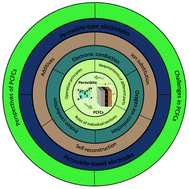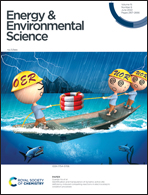Perovskites for protonic ceramic fuel cells: a review
Abstract
Protonic ceramic fuel cells (PCFCs), capable of harmonious and efficient conversion of chemical energy into electric power at reduced temperature enabled by fast proton conduction, are promising energy technology, which may radically re-define the whole way of energy conversion in the future, while their practical use is highly dependent on the availability of efficient key cell materials, i.e., electrolyte and electrodes, that should meet several important requirements, such as conductivity, stability, catalytic activity, compatibility, and cost. During the past two decades, complex oxides with the ABO3 perovskite or related structure have been extensively exploited as key materials in PCFCs, i.e., electrolyte and electrodes, due to their flexible composition with versatile properties. Rational design of perovskite and perovskite-related oxides with robust properties remains a pending research challenge, which makes in-depth understanding of the material engineering in PCFCs a specific focus of research. In this review, recent advances in the material engineering of perovskite oxides for PCFCs are summarized, and regulation strategies are presented, and applications as the electrodes and electrolyte are discussed. Importance is paid to exploiting the general rule of compositional engineering for amending the lattice structure, defect structure, and ionic transportation behavior of perovskite oxides, consequently providing useful guidance on the development of alternative perovskite materials for PCFCs and related fields.



 Please wait while we load your content...
Please wait while we load your content...